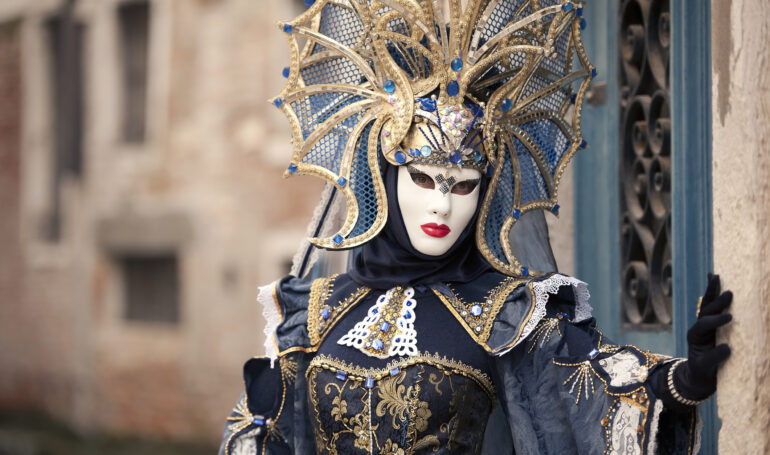
Venetian Carnival – History and Traditions
You’ve seen images of it and perhaps have been intrigued by it all. The masks, the loud music, the sometimes rowdy behavior, the overindulgence, but what exactly is the Venetian Carnival all about? Let’s get to know this party a little bit better.
Ash Wednesday and the Start of Lent
This year, on Wednesday, February 14th, Catholics will commemorate Ash Wednesday. Though the date changes yearly, Ash Wednesday is the start of Lent, the 40 days (minus the Sundays) before Easter Sunday. As Catholic tradition has it, Lent should be a period of sacrifice consisting of abstinence, self-denial, and fasting. If one knows that the next 40-plus days will be sacrificial, what better way to prepare for them than going out with a bang? And that’s precisely what Carnival is: a Pre-Lent period of celebration, festivities, gluttony, and over-indulgence.
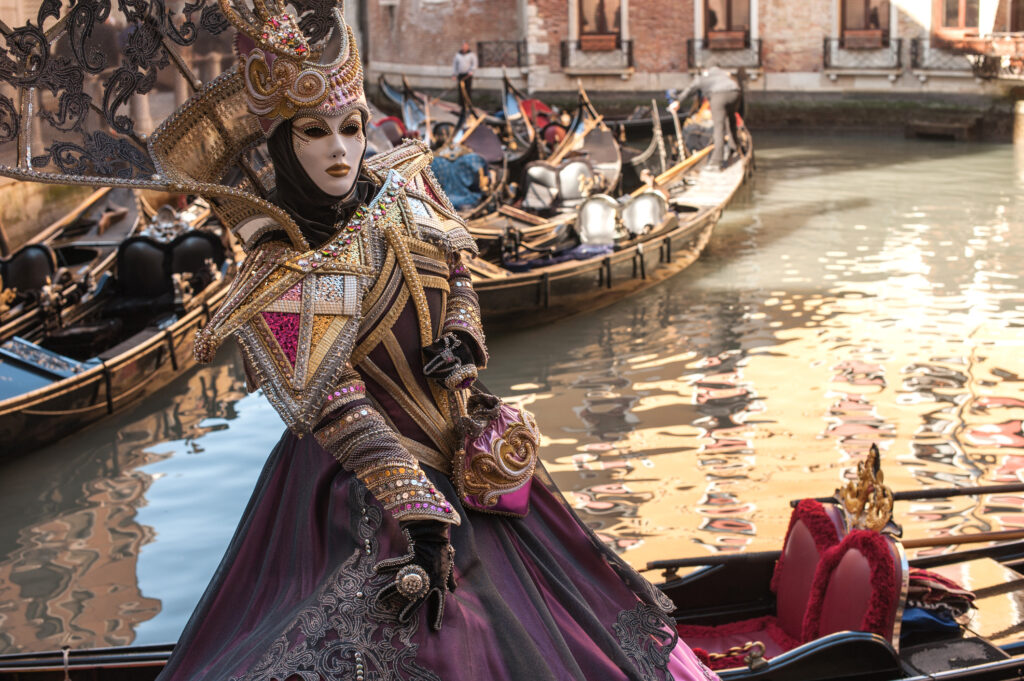
How Venice Throws a Party
Celebrated with parties, music, dancing, parades, alcohol, and excess foods, most of which are less than healthy and theoretically not eaten during Lent, Carnival lasts anywhere from a week to several weeks. Revelers young and old alike take to the streets to celebrate what is sure to be a grand old time. The word “Carnival” comes from the Latin terms “carne” and “vale” – or the removal of flesh. One could safely assume that implies the removal of meat from your diet, as well as pleasures of the flesh. As such, Carnival was an excellent way to enjoy all those off-limits foods and activities that wouldn’t be permitted during Lent. Meats, fried foods, sweets, and other gluttonous ingredients were off-limits, so the best way to quickly dispose of them would be to throw a party and use the off-limit foods one might have at home.
In one way or another, Carnival is celebrated in many parts of the world. New Orleans has Mardi Gras, and Rio de Janeiro has perhaps one of the wildest carnival parties. The Venice Carnival is one of the world’s most famous and popular carnivals. For a short period, Venice transforms into a masked ball. All the city streets are full of revelers and people disguised in lavish clothing. The Venice Carnival is a cultural event that attracts millions of tourists from all over the world. They flock to the city’s alleys to participate in this grand celebration full of colors and entertainment. The Venice Carnival is undoubtedly best known for the charm it exerts and the mystery it continues to possess even now that 900 years have passed since the first document referring to this very famous festival.
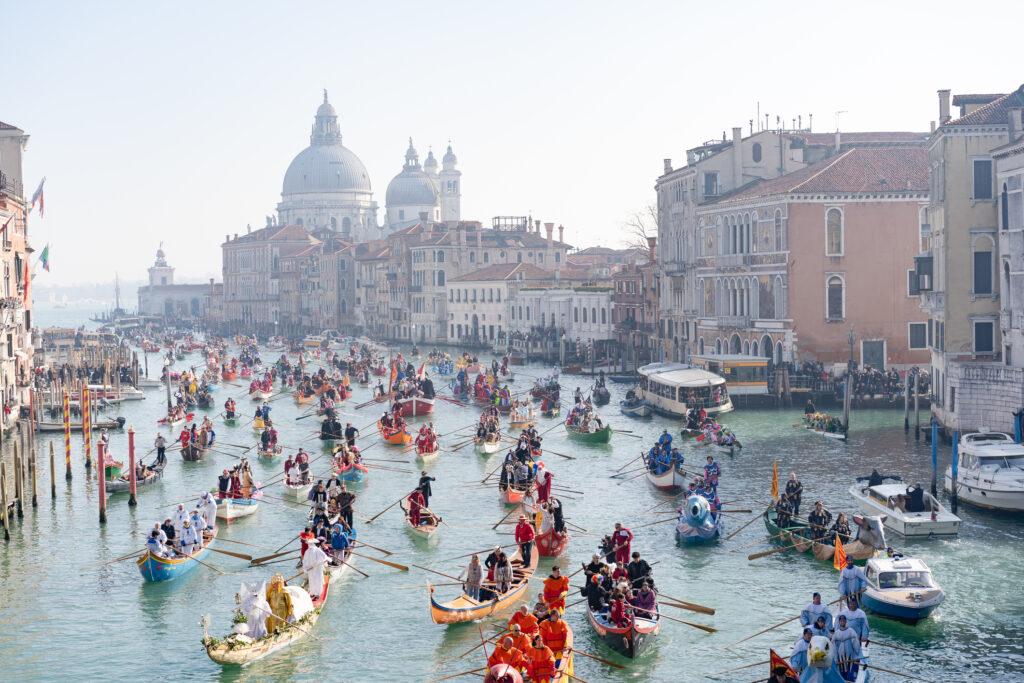
This Year’s Celebration
I have never been to Venice during Carnival season. I’ve been there during the summer and added returning during Carnival to my must-see list. Some three million people visit Venice during Carnival. This year, Venice will host its Carnival from February 3 – 13. Every year, the Carnival has a theme that inspires the surrounding celebrations and cultural events. This year’s theme will be travel, discovery, and encounters with previously only imagined worlds! Sounds very intriguing to me, and I’m only sorry to be missing out on it.
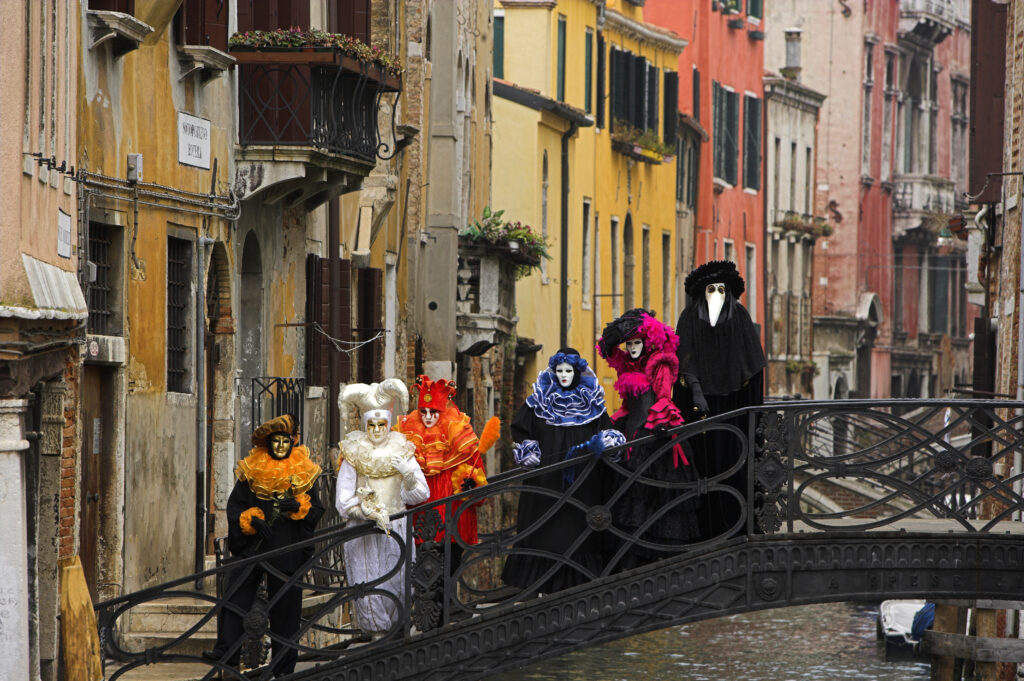
The Origin of the Venetian Carnival
Venice has celebrated Carnival “on again, off again” since 1162. Having just won their victory over the Patriarch of Aquileia, Venetians took to the streets for celebration. Knowing the history of the Venice Carnival and its curiosities means embarking on a beautiful journey into the habits and customs that reigned centuries ago in Italy.
The origin of the Venice Carnival dates back to the Middle Ages. It appears for the first time in a document by Doge Vitale Falier in 1094, where the idea of public entertainment was first mentioned. The history of the Venice Carnival as an official public holiday began only in 1296 when a mandate by the Senate of the Republic declared the day before the start of Lent a public holiday.
Two very ancient traditions inspired the origin and meaning of the Venice Carnival. Rome had the Saturnalia, an ancient festival during which the social order was overthrown by its residents and overlooked by all. On this day, enslaved people and free citizens flocked to the city to celebrate with music and wild dancing. Meanwhile, the Greeks had the Greek Dionysian cults. Large religious festivals with processions and theatrical performances involving masks and symbolic representations. The motto was “once a year, it is acceptable to have no brakes or restrains.” Venice has, therefore, reinterpreted the ancient Greek and Roman festivals.
The Doges were able to promote the Carnival to grant the population, particularly the humbler classes, a period dedicated to fun and celebrations. In the Venice Carnival, masks guaranteed total anonymity. A sort of cancellation of social divisions allowed citizens to deride the authorities and the aristocracy publicly. This celebration represented an outlet for the tensions and discontent created due to the rigid limits imposed by the public order of the Republic of Venice.
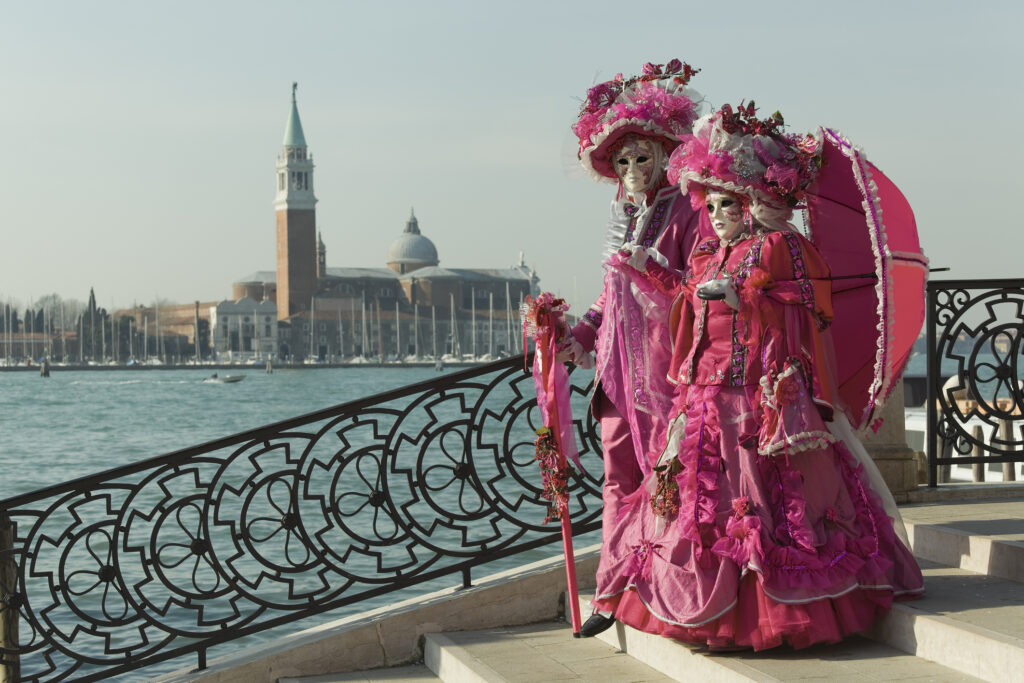
The Modern Day Venetian Carnival
In 1979, after almost two centuries of being on hold, the fantastic Venice Carnival, with its fascinating traditions, rose like a phoenix from its ashes. Thanks to the initiative of some citizens’ associations and the contribution of the Municipality of Venice, the Teatro la Fenice, the Venice Biennale, and tourist authorities.
The current Venice Carnival has become a significant and spectacular tourist event, attracting millions of visitors from all over the world. Tourists flock to the city to participate in this festival, considered unique for its history, atmosphere, and masks.
The Venice Carnival typically lasts eleven days, from the Saturday preceding Fat Thursday until Fat Tuesday. Traveling theaters take place in the city streets in an atmosphere of joy and playfulness, with everyone in masks to celebrate the charm of a world with dances, jokes, exclusive galas, and romantic encounters.
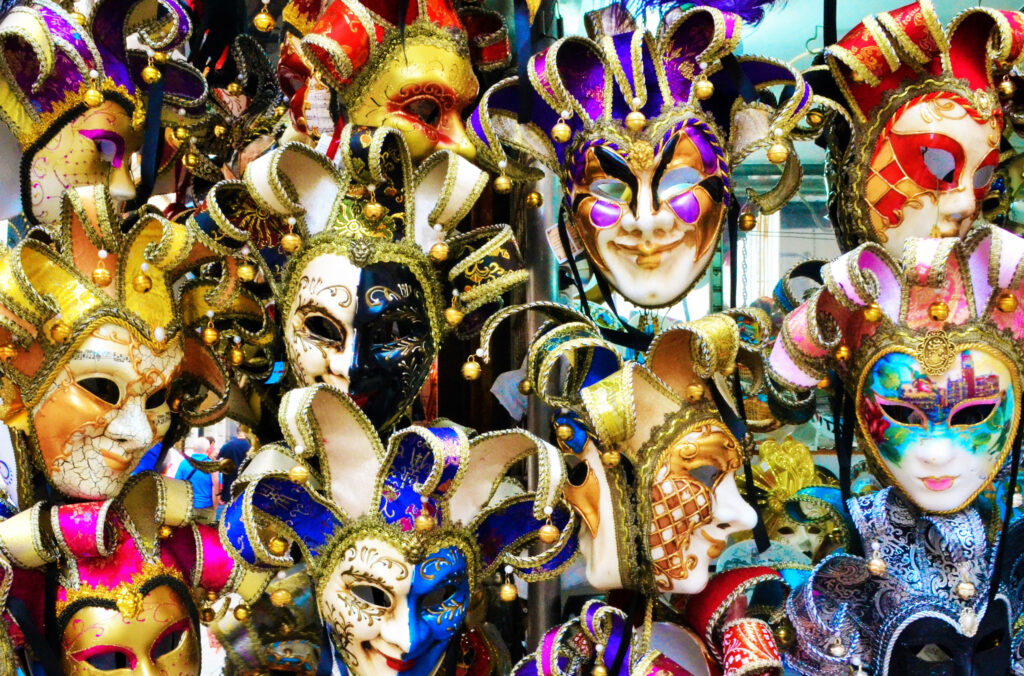
Traditions of the Venetian Carnival
Traditional events include the Feast of the Maries, the Flight of the Angel, or the Flight of the Colombina. The ancient Feast of the Maries, reinstated in 1999, consists of the twelve Maries parading on the afternoon of the first Saturday of the Carnival, complete with flag-wavers, musicians, and bridesmaids, all heading towards Piazza San Marco. Subsequently, the most beautiful one is selected as “Maria of the Year,” and wins a monetary prize. The Flight of the Angel or Flight of the Colombina is held on the first Sunday of Carnival. It is one of the central opening events. A mechanical dove descends from the Campanile of San Marco to the Palazzo Ducale. Halfway through, a trap door in its belly opens and releases confetti and sweets onto the crowd. At least, this was the tradition until 2001, when a suitably harnessed woman replaced the dove.
Masks were always crucial to Venetians. They were permitted to wear them from the day after Christmas until the day before Ash Wednesday. Also worn during other times of the year, it wouldn’t be unheard of for Venetians to wear masks for upwards of six months of the year! Masks permitted the generally reserved and “high society” Venetians to partake in risky business, such as gambling or mingling with the other classes. Masks took one out of character and allowed one to become someone else, if only while wearing the mask. Transgressions were not unheard of while wearing the mask.
Plan Your Trip to the Venetian Carnival
There certainly isn’t a lack of entertainment in Venice during this time. St. Mark’s Square becomes a festive and joyous piazza filled with locals and tourists wearing masks and costumes. Food stalls commonly sell local items such as the famous peach Bellinis to frittelle, or fried dough.
Many events are family-friendly and free to participate, while some require tickets and an admission fee. Many parades include children dressed as cartoon characters. Music festivals fill the streets, and “invite-only” masquerade balls are common. The Carnival ends with spectacular fireworks on Shrove Tuesday, and Venice slowly returns to everyday life.
If you’re like me and plan on adding Carnival in Venice to your bucket list, be sure to plan ahead. Hotels book early as this is their peak season. And the events that require tickets usually sell early and fast. Many masquerade balls can be costly to attend, but numerous hotels host their own masquerade balls, so this may be a great option. You can rent the fancy dress-up gowns, though I advise buying a mask and keeping it as a souvenir.

What to Pack for Italy
Cosa Mettere in Valigia per l'Italia
Everyone is always asking me what they should pack for Italy,
so I’ve created a quick reference guide that you can use for your next trip.
Hint: You don’t need nearly as much as you think you do!

Leave a Reply